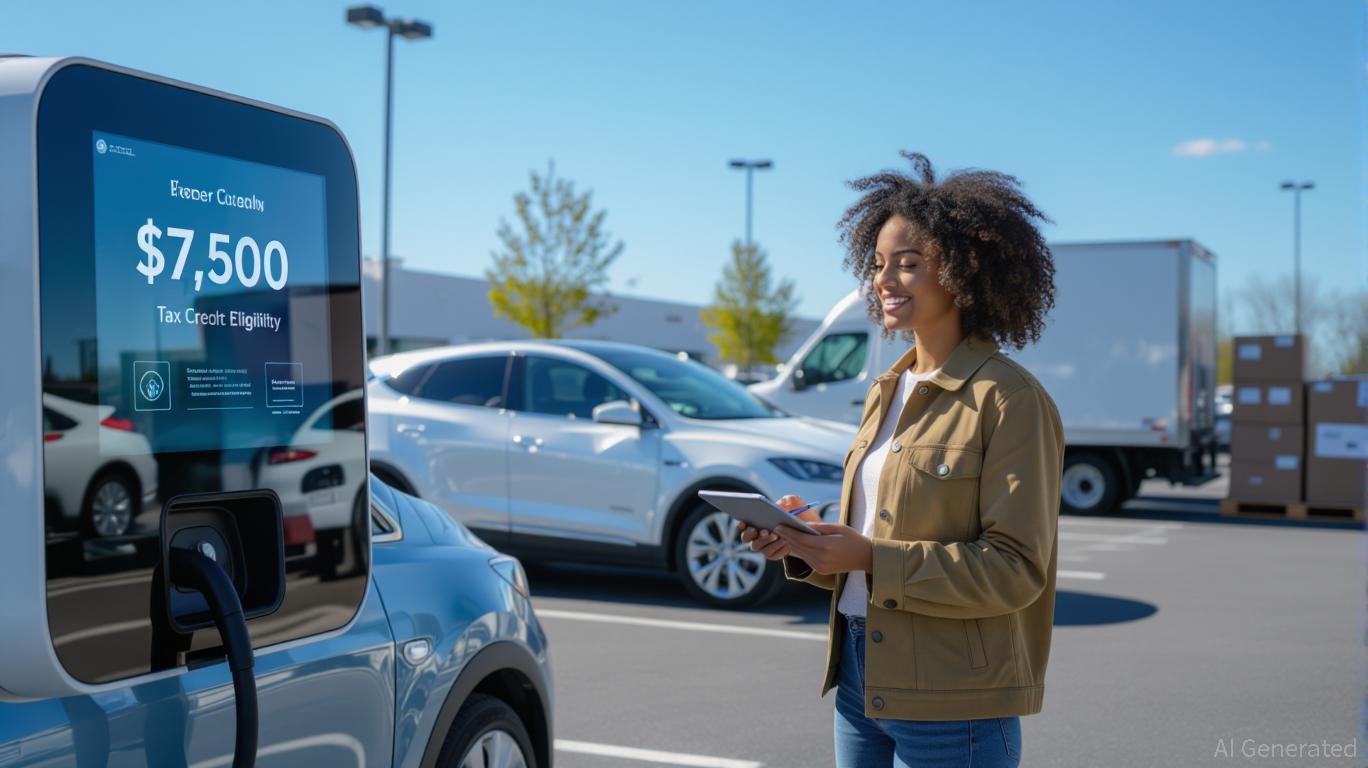
The U.S. federal EV tax credit, extended through September 30, 2025, has undergone a transformative shift with the IRS’s introduction of “contract-based flexibility.” This provision allows consumers to qualify for the $7,500 tax credit by entering a binding contract to purchase an electric vehicle before the deadline, even if delivery occurs afterward. This rule change has profound implications for automakers like Tesla, General Motors (GM), and Ford, reshaping market dynamics, consumer behavior, and stock valuations.
The Mechanics of Contract-Based Flexibility
The IRS’s updated guidance defines a binding contract as one with a nominal down payment or trade-in, effectively extending the eligibility window for buyers facing logistical delays. For example, a consumer ordering a vehicle that requires cross-state shipping or is still in production can still claim the credit if the contract is finalized before September 30. This flexibility aligns with legislative intent to treat contracts as purchases, ensuring that supply chain or manufacturing delays don’t disqualify buyers.
This provision has created a surge in pre-deadline contracts, particularly for high-demand models. Automakers must now prioritize securing early commitments from buyers, even if delivery is delayed. For Tesla, this means managing expectations for the Model 3 and Model Y, which remain eligible for the full credit. GM and Ford, meanwhile, are leveraging their expanding EV lineups—such as the Chevrolet Equinox EV and Ford F-150 Lightning—to capture market share before the credit expires.
Consumer Behavior and Market Timing
The contract-based flexibility has accelerated consumer decision-making. According to Cox Automotive, EV sales in Q3 2025 spiked as buyers rushed to lock in contracts before the tax credit’s expiration. This surge has been most pronounced for automakers with strong brand loyalty and production capacity. Tesla, for instance, reported 384,122 deliveries in Q2 2025, but this figure masks a 13.5% year-over-year decline, reflecting waning demand as the credit’s end looms.
GM, however, has capitalized on the urgency. Its EV sales grew by 111% in Q2 2025, with the Chevrolet brand becoming the second-best-selling EV brand in the U.S. The company’s focus on affordability and domestic production—key requirements for tax credit eligibility—has positioned it to outperform rivals. Ford, while less dominant, has seen a 2.62% stock price increase in August 2025, suggesting investor confidence in its ability to navigate the post-credit landscape.
Stock Valuations and Investor Sentiment
The tax credit’s expiration has created divergent trajectories for automakers. Tesla’s stock, which fell 18% in 2025, faces headwinds as its reliance on regulatory credits and high-end models (which are now ineligible for the leasing loophole) becomes apparent. The company’s Q2 2025 earnings showed a 42% drop in operating income, with nearly half tied to regulatory credits. Analysts warn that Tesla’s margins could turn negative in the next two quarters, raising concerns about its long-term viability.
GM, in contrast, has demonstrated resilience. Despite a 35.4% drop in net income due to Trump-era tariffs, its EV sales and strategic investments in battery production have bolstered investor confidence. The company’s stock rose 3.66% in early August 2025, reflecting optimism about its profitability timeline. Ford’s stock, while less volatile, has shown modest gains, indicating a cautious but positive outlook.
The broader EV market is also feeling the ripple effects. Cox Automotive revised its 2025 EV market share forecast from 10% to 8.5%, citing the expiration of incentives and economic uncertainty. This shift has led to a reevaluation of EV stocks, with investors favoring automakers with diversified product lines and strong ICE (internal combustion engine) sales.
Policy Uncertainty and Future Outlook
The One Big Beautiful Bill (OBBB) has further complicated the landscape by accelerating the tax credit’s expiration and eliminating the leasing loophole. This has forced automakers to pivot strategies. Tesla, for example, is doubling down on Full Self-Driving (FSD) technology and robotaxi services to differentiate itself. GM and Ford, meanwhile, are focusing on cost efficiency and domestic supply chains to meet tax credit sourcing requirements.
Investors must also consider the Biden administration’s broader EV policies, such as production tax credits for batteries and critical minerals. These incentives could offset some of the post-credit challenges, but their effectiveness remains untested.
Investment Advice
For investors, the key takeaway is to prioritize automakers with strong domestic production capabilities and diversified revenue streams. GM appears best positioned to weather the post-credit era, with its focus on affordability and supply chain resilience. Tesla’s long-term potential hinges on its ability to monetize FSD and robotaxi services, but its near-term risks are significant. Ford, while less dominant, offers a safer bet for those seeking exposure to the EV transition without overreliance on tax credits.
In conclusion, the IRS’s contract-based flexibility has created a race against time for EV buyers and automakers alike. While the tax credit’s expiration poses challenges, it also highlights the importance of innovation, supply chain agility, and strategic foresight. For investors, the next 12 months will be critical in determining which automakers can thrive in a post-incentive world.








